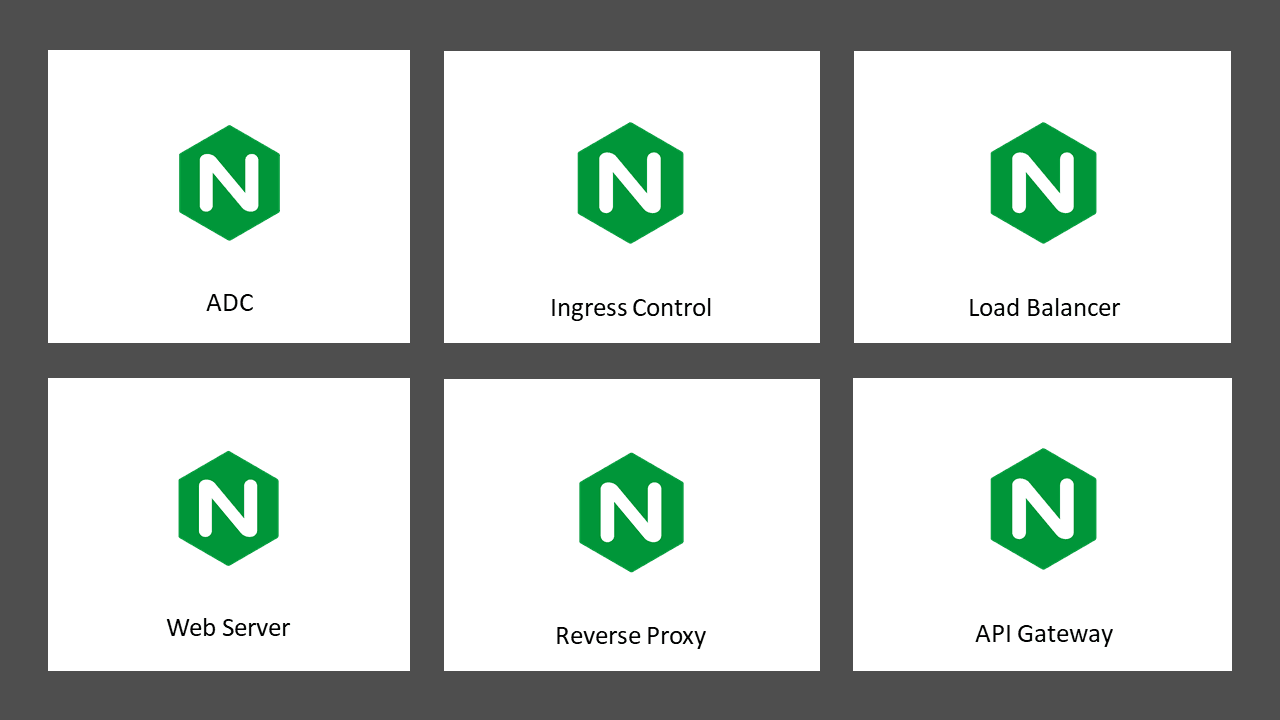Did you know that when Sysdig looked at its customers this year it found more than two million container instances running on-premises and in the public cloud? More exciting (for us, at least) was the data point that NGINX was running in 60% of those containers.
That’s a lot of NGINX.
One of the reasons you see NGINX and, by extension, NGINX Plus deployed so broadly is that it has many roles within modern and traditional architectures. It can act as a web server. It can act as a reverse proxy. It fills the role of an application delivery controller (ADC) and provides critical application services like SSL termination and HTTP routing and can act as an API gateway. In modern application stacks it fills the role of ingress control in the north/south data path as well as providing application routing and load balancing inside a container cluster, a.k.a. the east/west data path.

The Many Faces of NGINX Plus
This is important when we start talking about the need to bridge the divide between traditional network architectures and modern, cloud-native architectures. One of the more popular platforms for deploying and operating containerized workloads is Red Hat OpenShift Container Platform (OCP).
So, it’s natural that folks deploying OCP 3.11 might want to take advantage of NGINX Plus as an OCP Router. The Router in an OCP environment provides the very important function of getting requests from clients to the right service inside the container cluster.
Today’s blog brings you a link to a demo conducted by our own intrepid Principal Solutions Engineer Dylen Turnbull. In it, Dylen downloads the NGINX Plus trial from the repo, installs the NGINX Plus router on OCP, and brings up an application. Dylen then accesses the NGINX Plus UI and shows application traffic flowing into the OCP cluster with live activity monitoring on an OCP 3.11 cluster.
It’s ten minutes, and we encourage comments and feedback on our efforts via YouTube.
About the Author

Related Blog Posts

AppViewX + F5: Automating and orchestrating app delivery
As an F5 ADSP Select partner, AppViewX works with F5 to deliver a centralized orchestration solution to manage app services across distributed environments.

Build a quantum-safe backbone for AI with F5 and NetApp
By deploying F5 and NetApp solutions, enterprises can meet the demands of AI workloads, while preparing for a quantum future.

F5 ADSP Partner Program streamlines adoption of F5 platform
The new F5 ADSP Partner Program creates a dynamic ecosystem that drives growth and success for our partners and customers.
F5 NGINX Gateway Fabric is a certified solution for Red Hat OpenShift
F5 collaborates with Red Hat to deliver a solution that combines the high-performance app delivery of F5 NGINX with Red Hat OpenShift’s enterprise Kubernetes capabilities.
F5 Silverline Mitigates Record-Breaking DDoS Attacks
Malicious attacks are increasing in scale and complexity, threatening to overwhelm and breach the internal resources of businesses globally. Often, these attacks combine high-volume traffic with stealthy, low-and-slow, application-targeted attack techniques, powered by either automated botnets or human-driven tools.
Phishing Attacks Soar 220% During COVID-19 Peak as Cybercriminal Opportunism Intensifies
David Warburton, author of the F5 Labs 2020 Phishing and Fraud Report, describes how fraudsters are adapting to the pandemic and maps out the trends ahead in this video, with summary comments.
